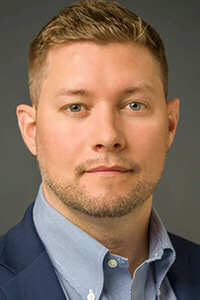Study Indicates How rTMS Treatments Alter Neural Connectivity Brain-Wide in Treatment-Resistant Depressed Patients, a Clue to Predict Who Will Benefit
Study Indicates How rTMS Treatments Alter Neural Connectivity Brain-Wide in Treatment-Resistant Depressed Patients, a Clue to Predict Who Will Benefit

Over the last decade, rTMS (repetitive transcranial magnetic stimulation), a form of non-invasive brain stimulation, has become a first-line treatment option for depressed patients, including those with major depressive disorder (MDD) who have not responded to multiple courses of other antidepressant therapies.
rTMS helps reduce depression symptoms in a significant percentage of treatment-resistant MDD patients—estimates range from one-third to one-half. This has enormous beneficial impacts, since treatment-resistant MDD patients are often disabled by their condition and have an elevated risk of suicide.
Why does rTMS help to reduce depression symptoms, and is there a way of determining in advance of treatment who is most likely to benefit? The answer about its mechanism of action is uncertain, but experts have long believed that the magnetic pulses that rTMS delivers just beneath the scalp to a brain area called the dorsolateral prefrontal cortex (DLPFC) have the effect of altering the plasticity of neurons in that brain region and possibly in other regions to which it is connected.
Broadly speaking, altering plasticity means changing the strength of connections between brain regions, making them stronger or weaker. (Depending on the context, either is potentially therapeutic.) If rTMS acts by altering neuroplasticity, this would support an important theory of what causes depression. The “neuroplasticity hypothesis” of depression proposes that dysfunction in neural plasticity is at least one of the important underlying mechanisms that causes the illness.
A research team led by Fidel Vila-Rodriguez, M.D., Ph.D., at the University of British Columbia, wanted to know more about the therapeutic action of rTMS and its relation to plasticity. They investigated how a single rTMS application changes neuroplasticity, as inferred from alterations in functional connectivity, both at the treatment target, the DLPFC, but also brain-wide. They also sought to discover whether these connectivity patterns after a single rTMS session can be used to predict which MDD patients are most helped by a subsequent 4-week rTMS treatment course.
They reported their results in the American Journal of Psychiatry. Sophia Frangou, M.D., Ph.D., 2019 winner of BBRF’s Colvin Prize, a 2008 BBRF Independent Investigator and 2002 BBRF Young Investigator; and Sean Nestor, M.D., Ph.D., a 2022 BBRF Young Investigator, were members of the team. Ruiyang Ge, Ph.D., was the paper’s first author.
The researchers recruited 52 patients with treatment-resistant MDD for a trial to measure the impact of a 4-week course of rTMS therapy. Of these, 38 patients (26 female; average age 42) agreed to take part in a separate inquiry involving having a single rTMS session conducted prior to the beginning of the treatment course. These patients received this initial rTMS session while inside a scanner that generates functional MRI images of brain activity in real-time. The patients then went on to have a 4-week rTMS treatment.
The researchers found that rTMS stimulation of the right DLPFC “induced widespread acute alterations in functional connectivity,” and that these changes “predicted clinical outcome after a 4-week course of rTMS treatment.”
The team made a number of interesting observations in addition to this conclusion. They found “widespread connectivity changes even in [brain] regions with no known functional or anatomical connections” with the site targeted in the treatments, the DLPFC. Importantly, they noted, “this adds to the evidence that rTMS has the potential to influence brain functional organization beyond that predicted” by the DLPFC’s already known connectivity pattern.
This, in turn, suggests to the team that one of the reasons for rTMS’s effectiveness in depression is its ability to change connectivity at the “macro level,” i.e., in widely dispersed sites across the brain that may be involved in different ways in depression’s varied symptoms (for example, low mood, suicidality, difficulty in experiencing pleasure). In general, the connectivity changes noted following rTMS were reductions in baseline connectivity, not increases.
It was also interesting that the connectivity changes seen after an initial rTMS session, while significant, were not long-lasting. This suggests to the team why repeated stimulation sessions, longer sessions, or sessions delivering a larger number of magnetic pulses, are need to generate clinical improvement in rTMS therapy.
Finally, the team commented on the predictive value of functional connectivity changes they observed after the first rTMS session. There was an association between the level of connectivity changes in that first session and treatment response after a 4-week course of therapy. Those patients with the most pronounced changes in the initial session tended to get more benefit from the full course of treatment. For this reason, the team proposes that the preliminary fMRI readout of how rTMS changes plasticity in the brain might be used as an indicator of an individual patient’s capacity to respond to a full course of therapy.
The results of this study need now to be replicated in larger cohorts that include a control group, and in trials that compare results in targeting the right DLPFC with other rTMS targets, the team noted.




